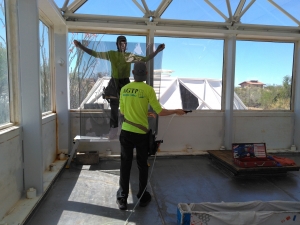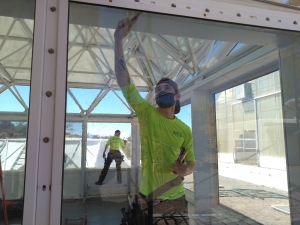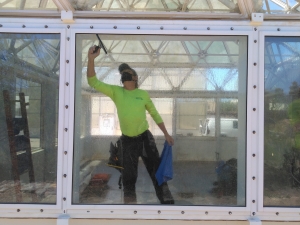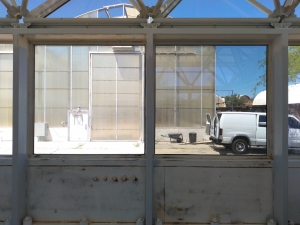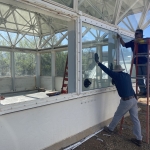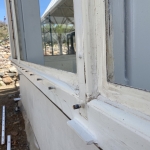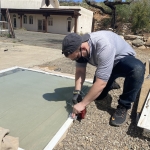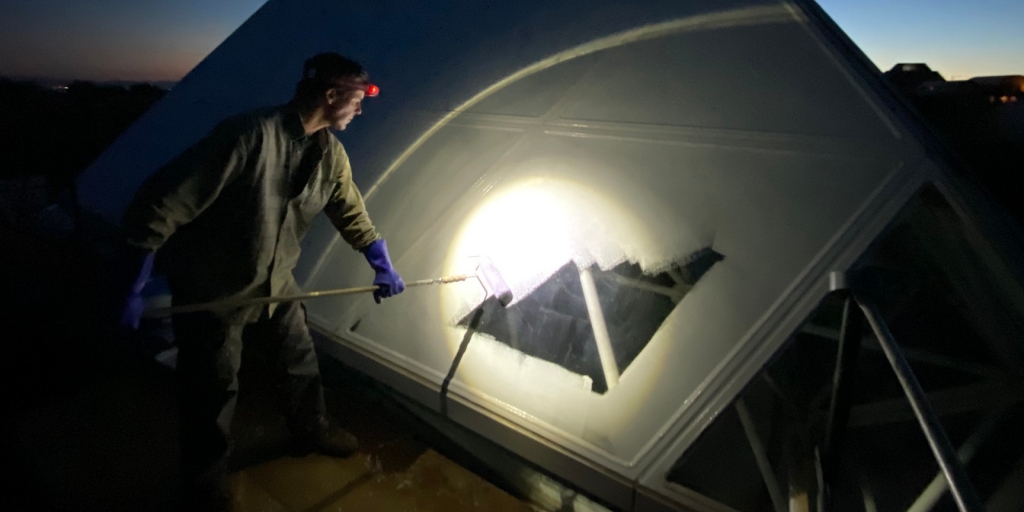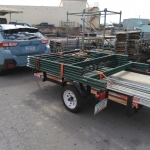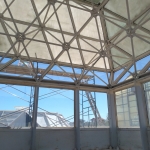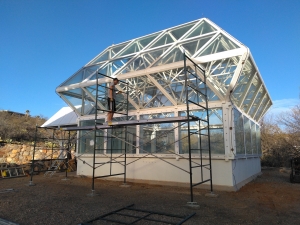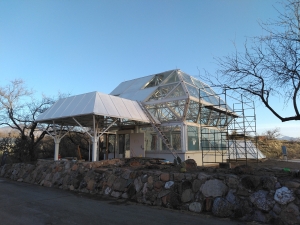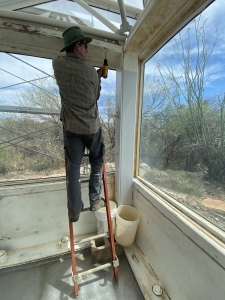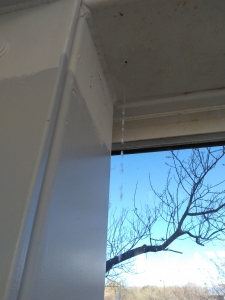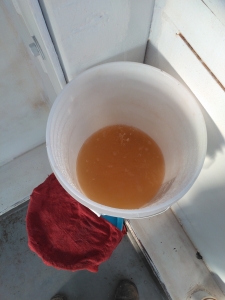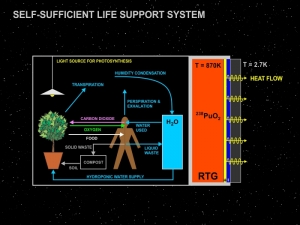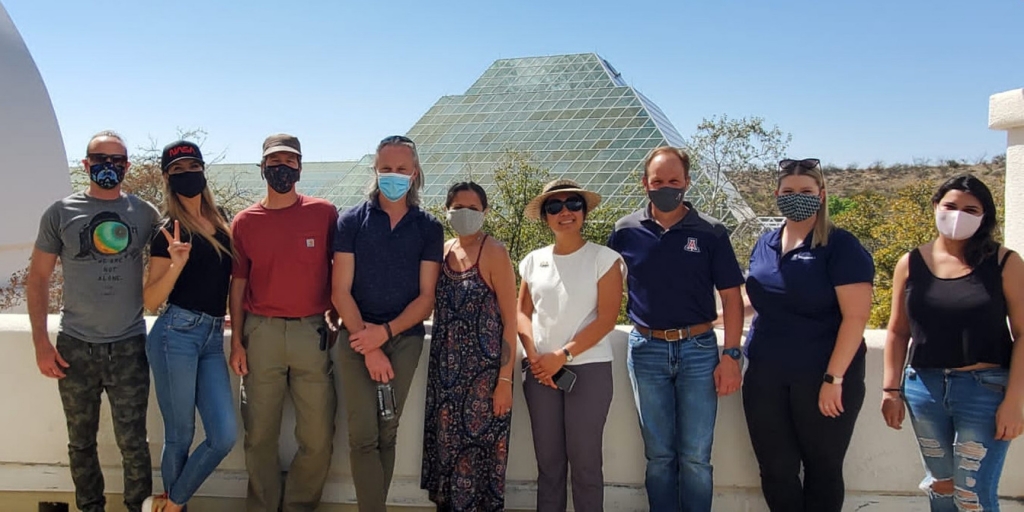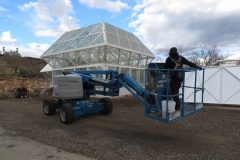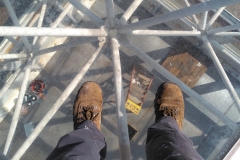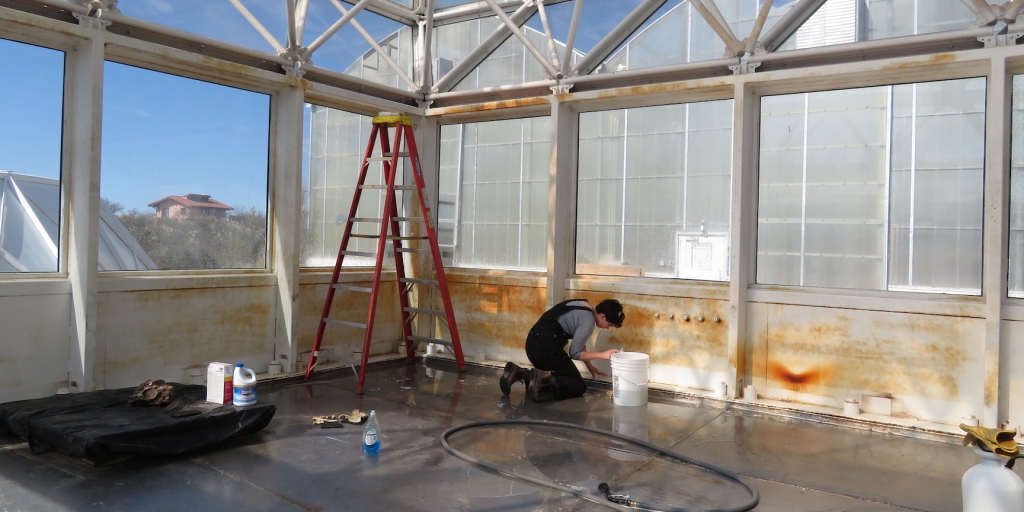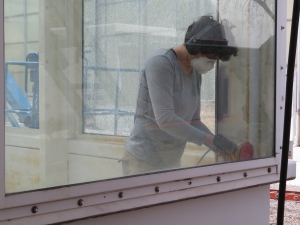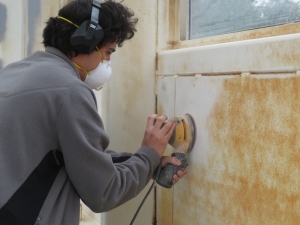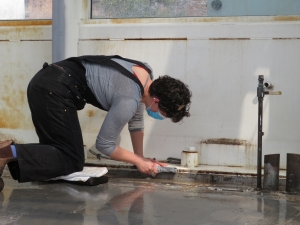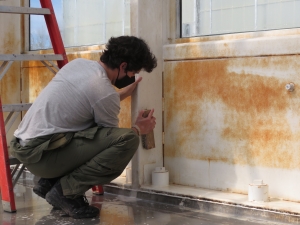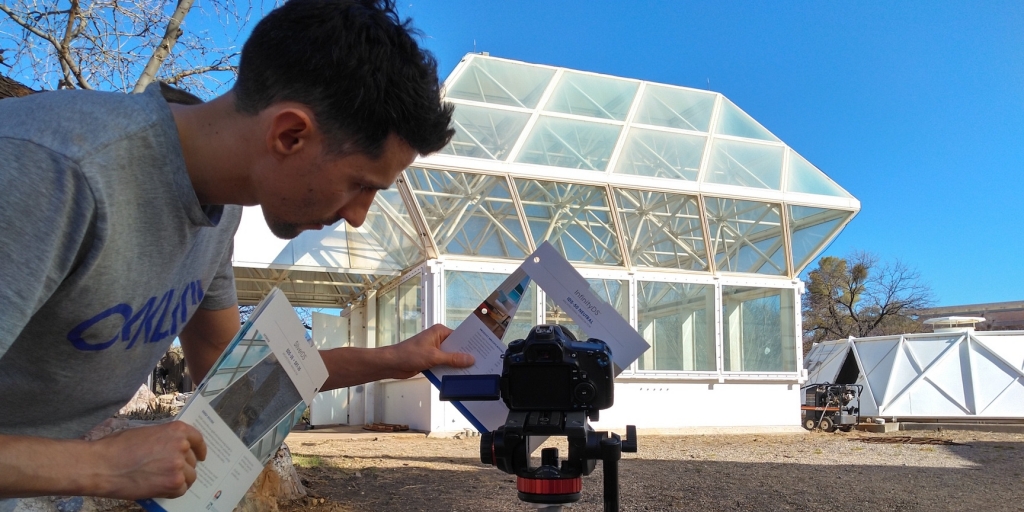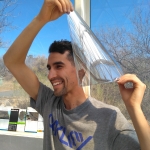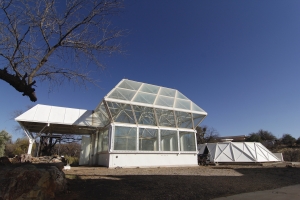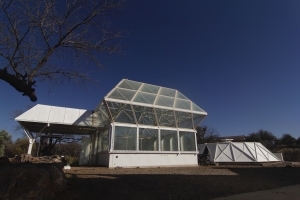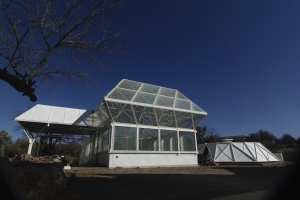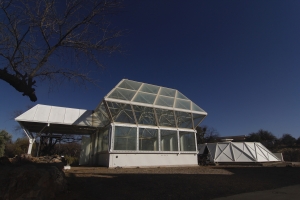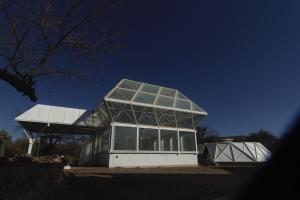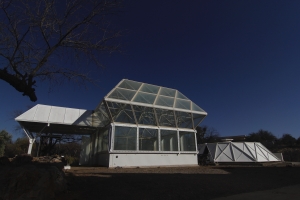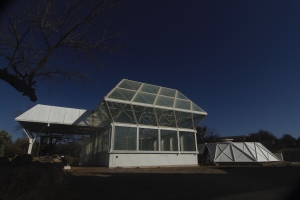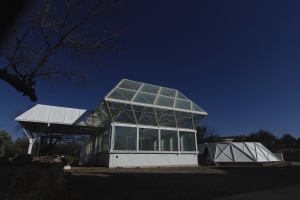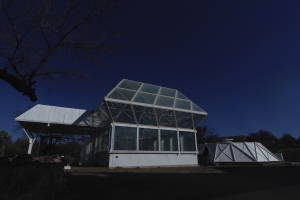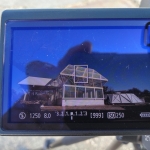SAM Construction – Catching the sunlight on Mars
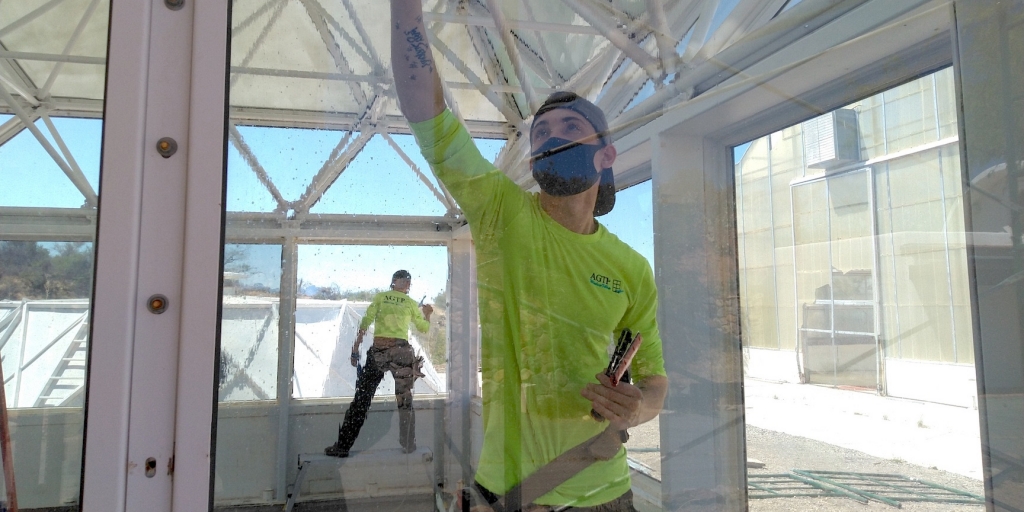
In March we selected a window tint to apply to the lower windows in order to reduce the visible light transmission to that of ambient light on Mars. Owner of Tucson based AGTP Window Films Greg Spencer (“Greg the Tinter”) and his son Tristen arrived at 9:30 am Tuesday morning and within minutes were engaged in prepping, cleaning, and applying large sheets of the window film. As with hanging dry wall, this is one of those tasks that the experts make look easy. Yet, if ever you have tried to do it yourself, you quickly learn the real challenges.
Greg and Tristen pealed, soaked, and placed thirteen sheets of window film, then used a squeegee to remove all air bubbles before the adhesive set and dried. The end result is simple beautiful. Not only did we achieve the desired, reduced ambient interior light, but these thirty year old windows now appear brand new. The film selected provides a reduction of in light with a minimal reflection such that when research team members are working inside of the SAM greenhouse at night they can yet enjoy the Moon and starlight outside.


